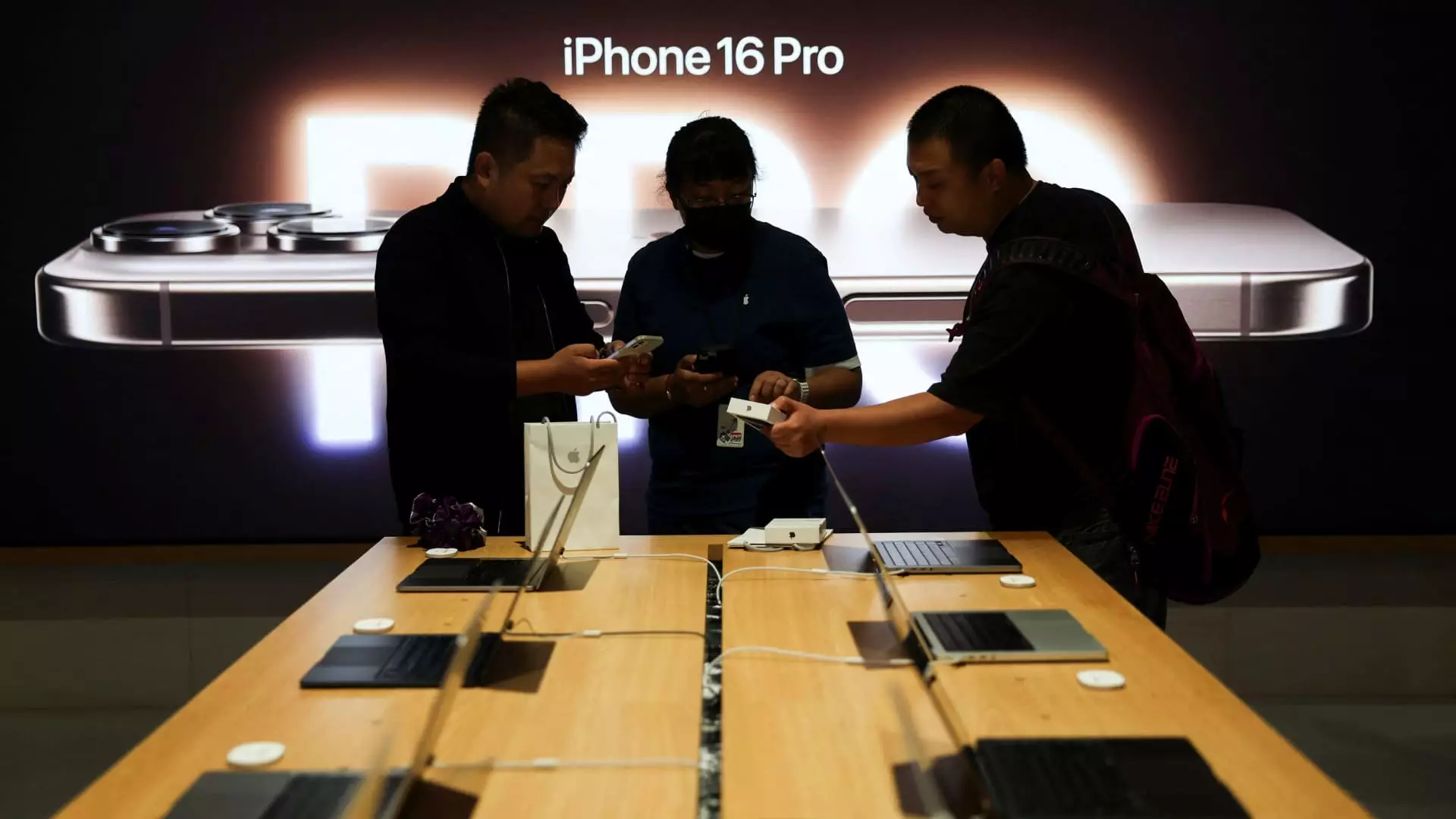The tech giant Apple Inc. finds itself in a complex situation as it navigates through mixed quarterly results. While the company exceeded expectations in both revenue and profit, investors’ enthusiasm appears tempered due to a lackluster sales forecast for the upcoming December quarter. This article delves into the implications of Apple’s latest financial report, explores analysts’ perspectives, and assesses the factors that could influence the company’s trajectory in the near future.
In its latest earnings report, Apple demonstrated resilience despite facing pressures in various segments of its business. The company reported a modest year-over-year sales increase of 6%, highlighting its ability to maintain revenue flow even in challenging market conditions. CEO Tim Cook conveyed a sense of optimism during a CNBC interview, proclaiming that the sales figures for the latest iPhone model have surpassed those of previous launches, suggesting a positive reception among consumers. Given that the iPhone constitutes nearly half of Apple’s total revenue, the health of this product line is pivotal for the company’s overall performance.
However, amidst this positive news, a significant concern for stakeholders has surfaced: the forecast for future sales. Apple’s projection of “low to mid single-digit” growth for the December quarter was not the optimistic outlook that investors were hoping for. This forecast caused a slight dip in Apple’s stock, indicating that even minor changes in growth expectations can influence investor sentiment significantly.
The response from analysts on Wall Street regarding Apple’s performance has been rather diverse, reflecting varying interpretations of the latest earnings report. Goldman Sachs, for instance, has reiterated a “buy” rating with a price target of $286, suggesting a potential upside of 27%. Analyst Michael Ng argues that, despite the market’s focus on slowed product revenue growth, the stability of the Apple ecosystem—with its expansive installed base and steady growth in services—will mitigate challenges in product revenue. This perspective emphasizes the durability and visibility of Apple’s revenue streams, which are critical as the company faces cyclical headwinds.
Conversely, Morgan Stanley maintains a similarly optimistic view, sustaining its “overweight” rating and a price target of $273, implying a 21% upside. Analyst Erik Woodring highlights that Apple is on the brink of a considerable device upgrade cycle, empowered by the introduction of “Apple Intelligence.” This innovation is expected to enhance consumer upgrade activity, potentially leading to record-breaking cycles in fiscal years 2025 and 2026, an outcome that Woodring believes has not yet been fully appreciated by the market.
In stark contrast, UBS has adopted a more cautious perspective, labeling its stance on Apple as “neutral” due to a subdued outlook for iPhone demand. With a price target of $236—a modest 4% upside—analyst David Vogt expresses concerns regarding limited on-device AI features, indicating that they have not resonated with consumers as anticipated. Vogt’s remarks reflect a growing apprehension that the demand curve for iPhones may shift to the right, pushing into future quarters rather than boosting immediate sales.
Additionally, Bank of America holds steady with a target price of $256, suggesting a 13% upside while maintaining a “buy” rating. Analyst Wamsi Mohan emphasizes that Apple’s staggered product launches create a distinct refresh cycle, wherein new features can gradually benefit the existing consumer base over time, fostering a more sustainable growth model.
As investors and analysts evaluate Apple’s current position, numerous questions linger regarding the company’s ability to navigate potential market volatility. With a challenging economic landscape and changing consumer behaviors, Apple must leverage its innovative capabilities to cultivate demand. Its focus on services, integrated technologies, and new product lines will be critical as the company seeks to enhance its revenue streams and maintain a competitive edge.
While Apple has outperformed in some respects, the tempered sales projections signal a need for caution. The contrasting sentiments from analysts highlight the uncertainty surrounding Apple’s future, and the next few quarters will reveal whether the anticipated upgrades and innovations will invigorate the brand’s market position or if external pressures will outweigh its inherent strengths.


Leave a Reply